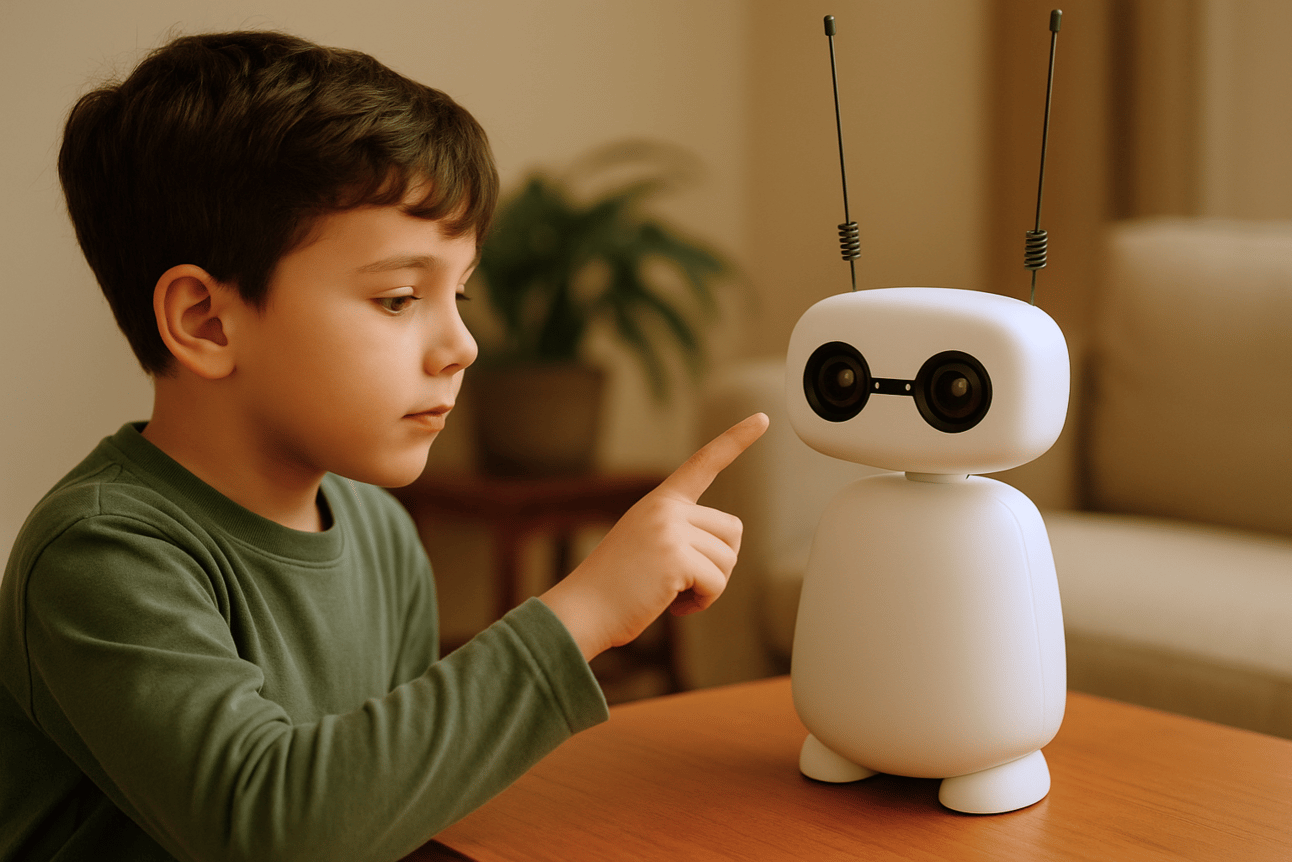
Image Source: ChatGPT-4o
Hugging Face Launches $299 Open-Source Robot to Democratize AI Robotics
Key Takeaways:
Hugging Face has launched Reachy Mini, a $299 desktop robot.
The robot is fully open source, with hardware, software, and assembly instructions freely available.
Reachy Mini integrates natively with Hugging Face Hub and the Spaces platform.
Designed to lower the barrier to entry in robotics, it can run AI models locally using a Raspberry Pi.
The product reflects Hugging Face’s push to lead in “physical AI,” not just language and vision models.
A $299 Robot for the AI Community
Hugging Face, the open-source AI platform often compared to GitHub for machine learning, is entering the robotics space with the launch of Reachy Mini, a $299 desktop robot aimed at developers, educators, and hobbyists. The 11-inch humanoid-style device was unveiled Tuesday, marking the company’s most ambitious foray into physical AI systems.
The launch coincides with Hugging Face reaching 10 million users, and reflects rising interest in robotics among developers using the platform. CEO Clément Delangue described Reachy Mini as a direct response to the accessibility gap in robotics:
“You can’t just build [robotics projects] on your laptop. You need to have some sort of robotics partner to help in your building, and most people won’t be able to buy $70,000 robots,” he said, referencing high-cost industrial machines and emerging humanoids like Tesla’s Optimus, which is expected to cost $20,000 to $30,000.
The Rise of Physical AI
The launch of Reachy Mini comes at a time when the AI industry is turning its focus toward physical embodiment. While large language models have led recent breakthroughs, many experts believe that interacting with the physical world is the next major leap for AI systems. Industry forecasts support this shift: Goldman Sachs estimates the humanoid robotics market could reach $38 billion by 2035, and the World Economic Forum has identified robotics as a key frontier for industrial innovation.
“We’re seeing more and more people moving to robotics, which is extremely exciting,” said CEO Clément Delangue. “The idea is to really become the desktop, open-source robot for AI builders.”
Open-Source Hardware Meets AI Development
Reachy Mini is the first Hugging Face product to combine hardware and software into a fully integrated offering. The robot runs Python-based code, with JavaScript and Scratch support on the roadmap. It includes a Raspberry Pi 5 and is described as fully autonomous—suggesting it can run AI models locally without relying on cloud infrastructure. A wireless version adds battery power, making the robot portable and independent from external power or data connections.
Out of the box, the robot supports:
Face and hand tracking
Smart companion behaviors
Dance routines
Six degrees of freedom in the moving head
Full body rotation
Animated antennas
Wide-angle camera
Multiple microphones
5-watt speaker
First version ships as a DIY kit with partial assembly required
Developers can build and share new robot applications through Hugging Face’s Spaces platform, creating a public repository of open robotics tools.
This approach mirrors what’s already happening in software: open-source AI models from companies like Meta and DeepSeek are challenging closed-source leaders by lowering development costs and accelerating innovation. Hugging Face is betting that the same dynamic can apply to hardware—if the tools are accessible enough.
From Pollen Robotics to Platform Strategy
Reachy Mini builds on Hugging Face’s acquisition of French startup Pollen Robotics earlier this year. Unlike traditional robotics companies that ship one tightly packaged product at a time, Hugging Face plans to experiment with rapid prototyping and iterative releases.
“Maybe we’ll release 100 prototypes a year,” Delangue said. “Out of this 100prototypes, maybe we’ll assemble only 10 ourselves… and maybe fully assembled, fully packaged, fully integrated with all the software stack, maybe there’s going to be just a couple of them.”
All hardware schematics, firmware, and instructions will be open source, allowing users to assemble their own robots or buy pre-built units from Hugging Face. This model mirrors successful open software strategies: monetize convenience, not access.
Privacy and Control in the Age of Physical AI
The introduction of AI robots into homes and workspaces also raises new questions about privacy, surveillance, and autonomy. With built-in cameras, microphones, and movement capabilities, robots like Reachy Mini are fundamentally different from digital AI assistants.
Delangue positions open source as a safeguard against unchecked corporate control:
“The idea of ending up in a world where just a few companies are controlling millions of robots that are in people’s homes, being able to take action in real life, is quite scary.”
By letting users inspect code, audit data pipelines, and run models locally, Hugging Face aims to keep human oversight and transparency at the center of physical AI development.
Building a Robotics Ecosystem
Hugging Face’s ambitions go far beyond a single product. Reachy Mini is just one part of a growing open-source robotics stack that includes:
SmolVLA, a 450M-parameter vision-language-action model optimized for consumer devices
SO-101, a $100 robotic arm
HopeJR, an upcoming humanoid priced around $3,000
Partnerships with NVIDIA (Isaac Lab) for simulation and training
Integration with research projects like the Pi0, a foundation robotics model from UC Berkeley’s Sergey Levine
"Making robotics more accessible increases the velocity with which technology advances,” Levine noted in statements about open-source robotics.
Delangue sees this as the start of a new kind of developer workflow—one that treats hardware as a core part of the AI development process, not an afterthought.
Competing with Giants, on Different Terms
Unlike Tesla’s Optimus, Boston Dynamics’ Atlas, or high-end offerings from Unitree and Figure, Reachy Mini doesn’t aim to impress with strength or mobility. Instead, it’s designed to be:
Affordable enough for students and indie developers
Modular for rapid iteration and experimentation
Integrated into Hugging Face’s open AI ecosystem
This approach mirrors successful disruptions in other technology sectors. Linux challenged proprietary operating systems, Android democratized mobile development, and TensorFlow accelerated machine learning adoption—largely by embracing openness and enabling community-driven innovation over reliance on a few corporations.
From Workbench to Classroom
At $299, Reachy Mini could reshape robotics education. Delangue said the idea for a wireless version came after a colleague’s daughter wanted to carry it around the house. Now, it’s portable enough for classroom demos, universities, coding bootcamps, summer camps, and home projects.
Educational applications include:
Learning basic programming with Python or Scratch (planned)
Deploying and testing vision or speech models on a real robot
Building collaborative robotics projects using open-source kits
Customizing hardware/software for classroom or research needs
Making robotics accessible in summer camps, coding bootcamps, and at home
University research labs without traditional robotics budgets
These use cases are inferred based on the product’s features and open-source design, though not officially listed by Hugging Face.
Fast Facts for AI Readers
Q: What is Reachy Mini?
A: A $299 desktop robot developed by Hugging Face. It’s fully open source and integrates with Hugging Face Hub and Spaces, allowing users to build, customize, and share robotics applications.
Q: Who is it for?
A: Developers, educators, researchers, and AI hobbyists interested in hands-on robotics.
Q: What makes it different?
A: Open hardware design, low cost, community-driven software, and full AI model integration without relying on cloud infrastructure.
Q: How is it powered?
A: A Raspberry Pi 5, camera, microphone array, speaker, and battery in the wireless version make it a fully standalone system.
Q: Is it available now?
A: Shipping starts next month, initially as DIY-style kits with partial assembly required.
Looking Ahead
Hugging Face’s Reachy Mini marks a significant shift in who gets to build robots—and how. By lowering the cost of entry and releasing everything as open source, the company is betting that community-led innovation will outpace centralized R&D. If it works, we may look back on Reachy Mini not just as a quirky robot kit—but as the moment AI hardware went open.
As AI moves from cloud servers into the physical world, the tools we build—and who gets to build them—will shape the next decade of technology. Hugging Face wants that world to be open, affordable, and collaborative from the start.
Editor’s Note: This article was created by Alicia Shapiro, CMO of AiNews.com, with writing, image, and idea-generation support from ChatGPT, an AI assistant. However, the final perspective and editorial choices are solely Alicia Shapiro’s. Special thanks to ChatGPT for assistance with research and editorial support in crafting this article.
